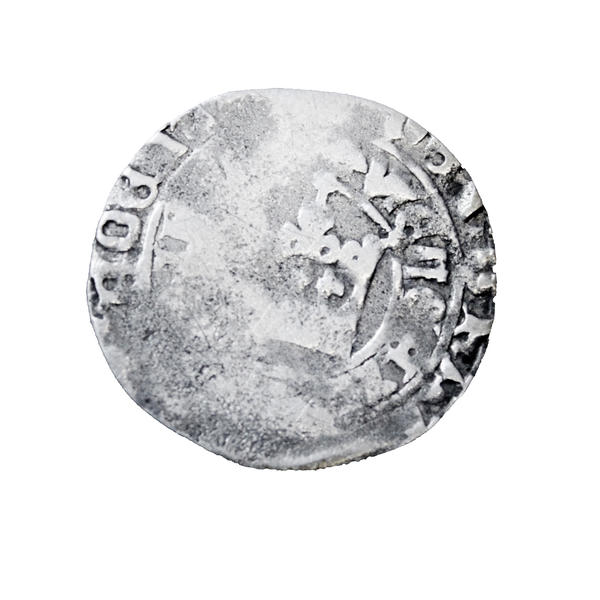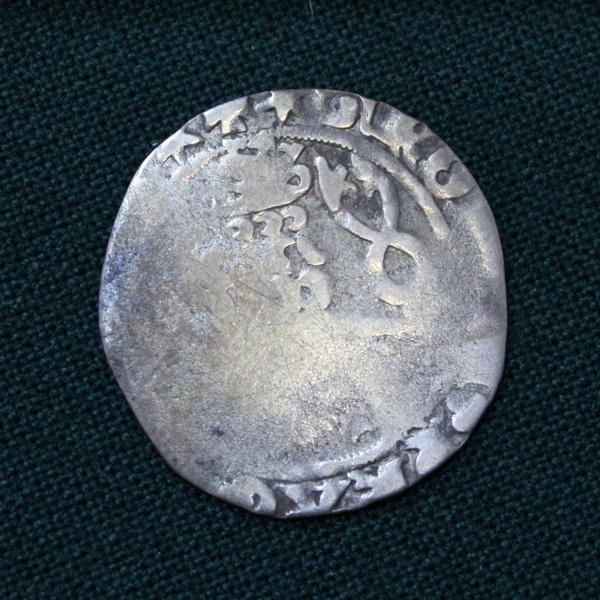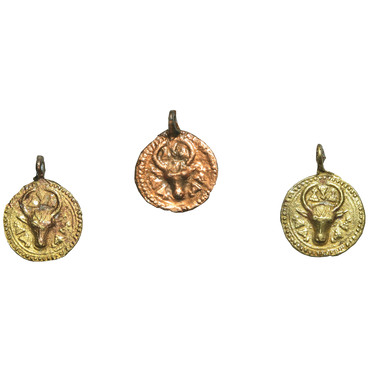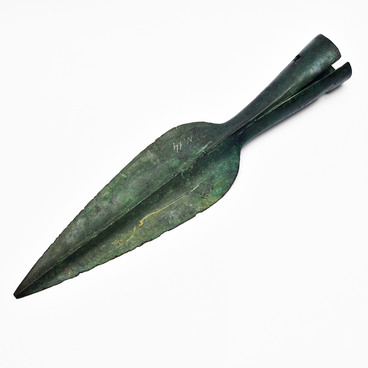The Prague groschen (groš) was one of the main monetary units in many European countries in the 14-15th c. It was also in use in the Grand Duchy of Lithuania, which then included the Bryansk lands. Coins were minted from fine silver, that was mined in Czech mines on the site of the modern town of Kutná Hora.
Prague groschen
Время создания
15th century
Размер
Diameter 2.7 cm, weight 2.5 g
Техника
Silver, casting, embossing
Коллекция
Выставка
4
Открыть в приложении#1
Prague groschen
#2
#4
Four hoards with Prague silver groschen have been found in the Bryansk region since 1895. The last of them was discovered in June 2005 on the site of the old village of Sokolovo. The owner of the coins presumably buried them under the foundation of his house. All the groschen from the Sokolov monetary treasure were transferred to the Bryansk State Regional Ethnography Museum.
The hoard contained 60 whole coins and 10 separate fragments. Historians have deduced that groschen were sometimes cut into pieces to pay for inexpensive purchases in the 14-15th centuries. There were no smaller monetary units then. Large transactions were settled in sheaves, each of which equaled to 60 groschen.
#5
The first Prague groschen were minted in 1300 by the order of the Czech king Václav II. At that time, they used fine silver, 930th grade. This meant that the coin alloy contained 93 per cent of precious metal and 7 per cent of impurities, which prevented the money from breaking and wearing away.
#3
The reverse side of the coin
#7
Nearly all silver coins from the Bryansk hoards were issued much later - between 1378 and 1415. The Czech Lands were then under King Václav IV, who assumed the throne under the name of Wenceslas. It was this name that was used on the obverse of coins. By that time, silver had been used of a lower grade: the coin alloy included 66 to 81 percent of pure metal, the balance was impurities.
#6
The Prague groschen of Wenceslas IV times weighed between 2.66 and 2.9 grammes. Their weight varied slightly depending on the year of issue. The coin from the collection of the Bryansk State Regional Ethnography Museum weighs 2.5 grammes: it has worn away because of being in use, and the groš has lost part of its weight.
The head of the coin kept in the museum has the heraldic sign of the Czech kings and the name of the monarch, during whose reign it was issued. The reverse side has the coat of arms of the Czech Lands, the lion rampant with a forked tail. The inscription on the tail side reads Prague groschen.
#8
Bryansk State Regional Ethnography Museum
читать дальшескрыть
00:00
00:00
1x
Prague groschen
Время создания
15th century
Размер
Diameter 2.7 cm, weight 2.5 g
Техника
Silver, casting, embossing
Коллекция
Выставка
4
Открыть в приложении
Поделиться




